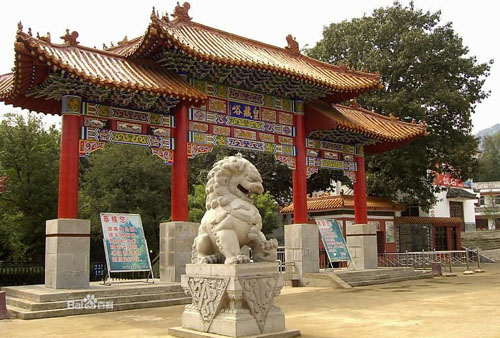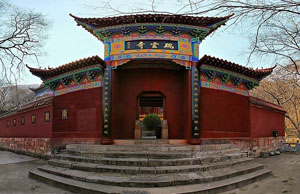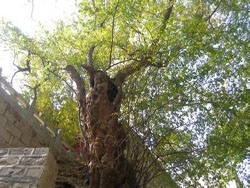|
 |
| Huangcangyu |
Location
Situated in Xiaoxian, a county in Suzhou city of Anhui province, Huangcangyu is located at the junction of four provinces of Jiangsu, Shandong, Henan and Anhui. It is three hours' drive from the capital cities of the four provinces: Hefei, Nanjing, Jinan and Zhengzhou. It is only one hour's drive to Xuzhou Railway Station, Xuzhou High-speed Railway Station and Xuzhou Guanyin Airport.
Huangcangyu is 389 meters above sea level. The scenic area is very steep and mountainous. The area is dotted with caves and springs. The park is featured by grandeur, varied topography, peaks rising one higher than the other, weird-shaped rocks, deep and secluded caves, and thick forests. The mountains, streams, forests, rocks and caves set each other off well. Profound cultural heritage of the Han Dynasty is still visible here: many old and valuable trees, scenic, unique style of temple architecture. The virgin forests take up majority of the total area, and are home to a wide variety of rare animals and plants. The architectural style of the ancient temples and nunneries is very unique.
Origin of the name
Huangcangyu was formerly named Huangsangyu, because the valley is covered with yellow mulberry trees. Emperor Liu Bang of the Han Dynasty once hid here to avoid capture by the pursuing Qin soldiers, and afterward the place was named Huangcangyu.
Ruiyun Temple
 |
| Ruiyun Temple |
In the scenic area, Ruiyun (Auspicious Cloud) Temple was built in the Tongnian Region of the Daliang Dynasty (about 535 AD), formerly known as Tengyun (Climbing up to the cloud) Temple. During the years when competitions between Chu and Han was server, Liu Bang once hid in Emperor Hidden Cave, his wife, later Empress Lv, was looking for her husband. She looked into the mountains afar and found the mountain top was shrouded by auspicious clouds. She then went up and found Liu Bang. In Records of the Grand Historian-Annals of Gaozu, Empress Lv said, "the place where Ji (Liu Bang's style name) resided often emerged auspicious clouds, so I went there for look for him and I can always find him without doubt." According to this historical records, during the Reign of Huanhong, in the Song Dynasty, the temple was renames as Ruiyun Temple.
Ancient Trees
 |
| Ancient tree |
The park covers a total area of 26.5 square kilometers with the forest coverage rate of 97%. There are 199 kinds of woody plants, more than 700 kinds of Chinese medical herbs. Small animals including hares, hedgehogs and badgers are seen running through woods and bushes. The area remains a fertile habitat for a wide array of flora and fauna. There is a best preserved primeval forest at the same latitude.
The most prominent feature of Huangcangyu is the numberless thousand-year-old ancient trees that can be seen everywhere in the mountain valley. The wingceltis is the most rare and old trees in Huangcangyu. Mother Nature has created grotesque pteroceltis with twisted roots and gnarled branches. In the mountain valley and around the temples, old pteroceltis trees are growing together, some of them are upright and vigorous and others are humpback and weighed down with age. Some ancient pteroceltis have mottled barks and dry-shaped bump with branches towering high into the sky, but root deeply into the crevices, knotted due to the weather-beaten years.
In the scenic area, there are two ginkgo tree aged more than 2,000 years. One has a trunk with both a big and a small branch. The ancient tree blots out the sky and covers the sun with luxuriant foliage. It is vividly described as "an old man with his son and grandchild". To the right, there is an ancient pine with strong branches. The tress is nearly 20 meters high whose age is similar to the ginkgo.
There is also a boxwood, aged about 1500 years-It is said that the thousand year-old boxwood is very rare. According to a legend, 2,500 years ago, Confucius went about drumming up support for his idea and lecturing here. In the Song Dynasty, when Su Dongpo was the prefecture of Xuzhou, he made many trips to Huangcangyu for sight-seeing and left many pieces of lyrics and poems.
Source: www.ah.gov.cn
|